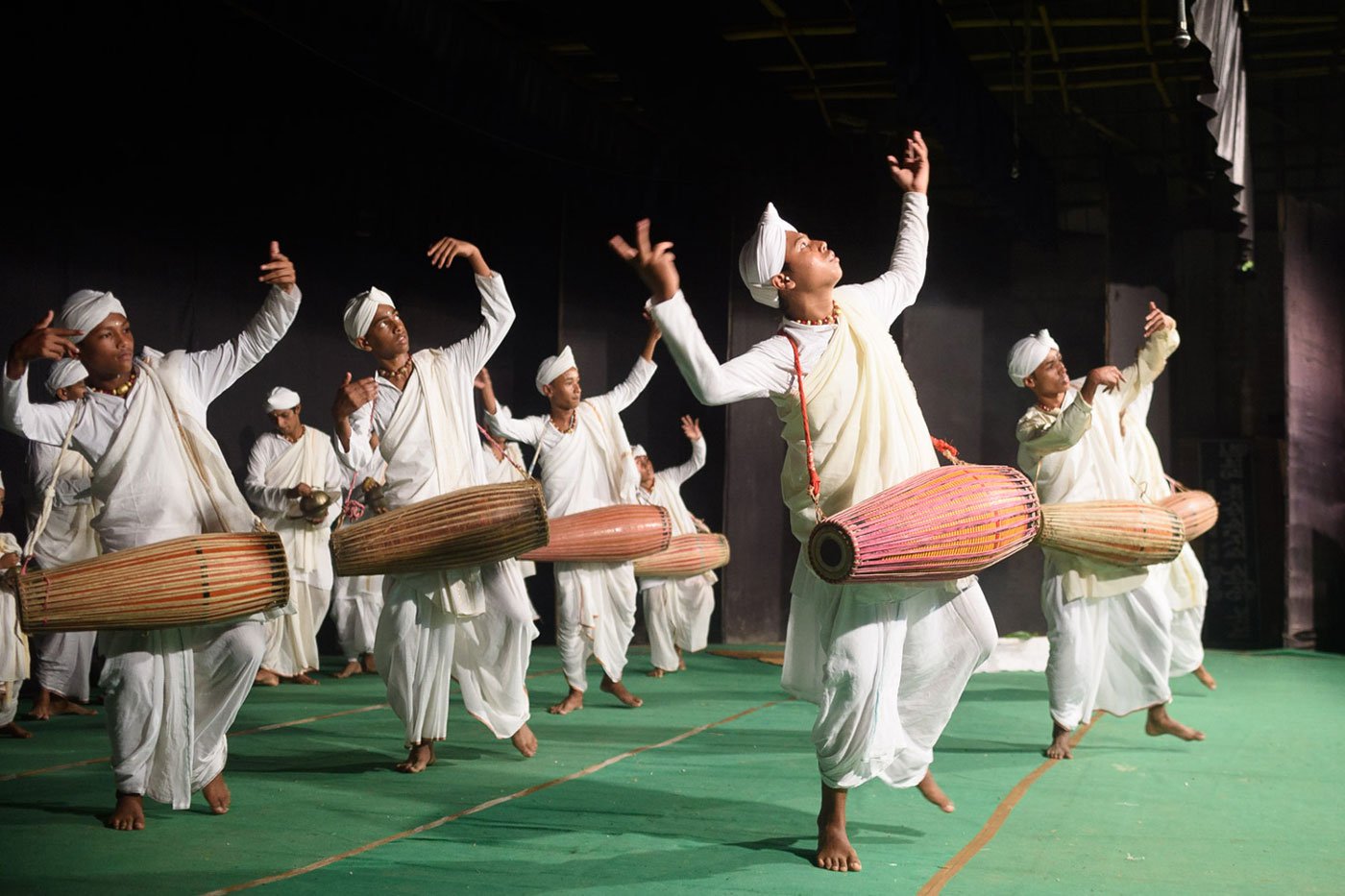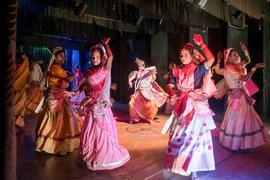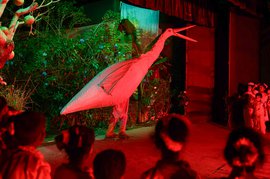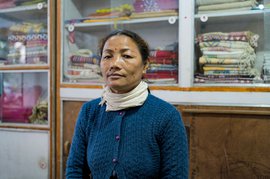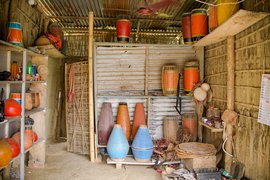“I don’t have much patience for studying,” Partha Pratim Baruah tells me as we stroll down the road in Garamur, a small town in Majuli, on a pleasant afternoon in November. “I know I will never be able to get a job by studying,” he adds. The 16-year-old is one of the young gayan-bayans from the district’s Garamur Saru Satra.
An important aspect of sattriya culture, Gayan-Bayan is a religious folk performance primarily practiced in the satras (Vaishnavite monasteries) of Assam. The singers performing are called gayans who also play the taal (cymbals) whereas the instrument players, who play khol drums and the flute, are termed bayan. In Majuli, being a gayan or bayan is not a profession but a tradition people take pride in and consider part of their identity.
“If I cannot secure a job after school, if it is not in my fate, then what will I do?” asks Partha in a matter-of-fact tone. He wants to pursue music professionally after his Class 12 exam. His older sister is already a music teacher in a village in Uttar Pradesh.
“My parents have also supported the idea [of enrolling in a music school in Guwahati],” he says. “That support is main. Without it, how will I be able to pursue music?” His father, the owner of a small business selling rice and firewood, has agreed to the idea but his mother is not quite happy about it. She doesn’t like the idea of Partha going far from home for his studies.
When it’s performance time, the artiste Partha dresses in pristine white kurtas, dhotis and headgear called paag, and ties a cloth called seleng across the body. The performers also wear a string of motamoni beads and a tilak of sandalwood paste adorns their foreheads.
Partha is just one of the many young artists I’m interviewing during the run-up to one of their performances. Backstage, they appear confident as they help one another in tying the paag and fixing the seleng using pins.
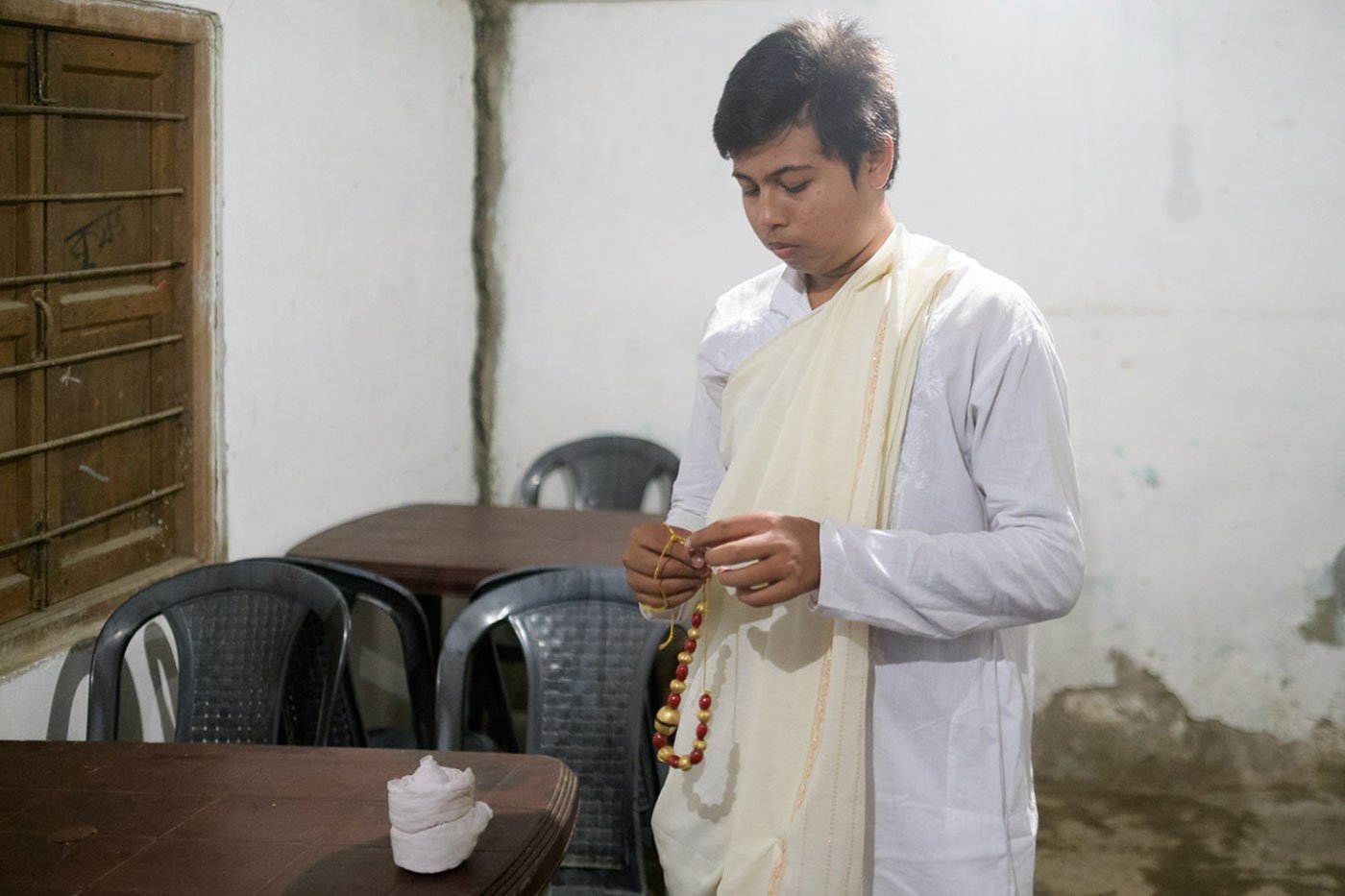
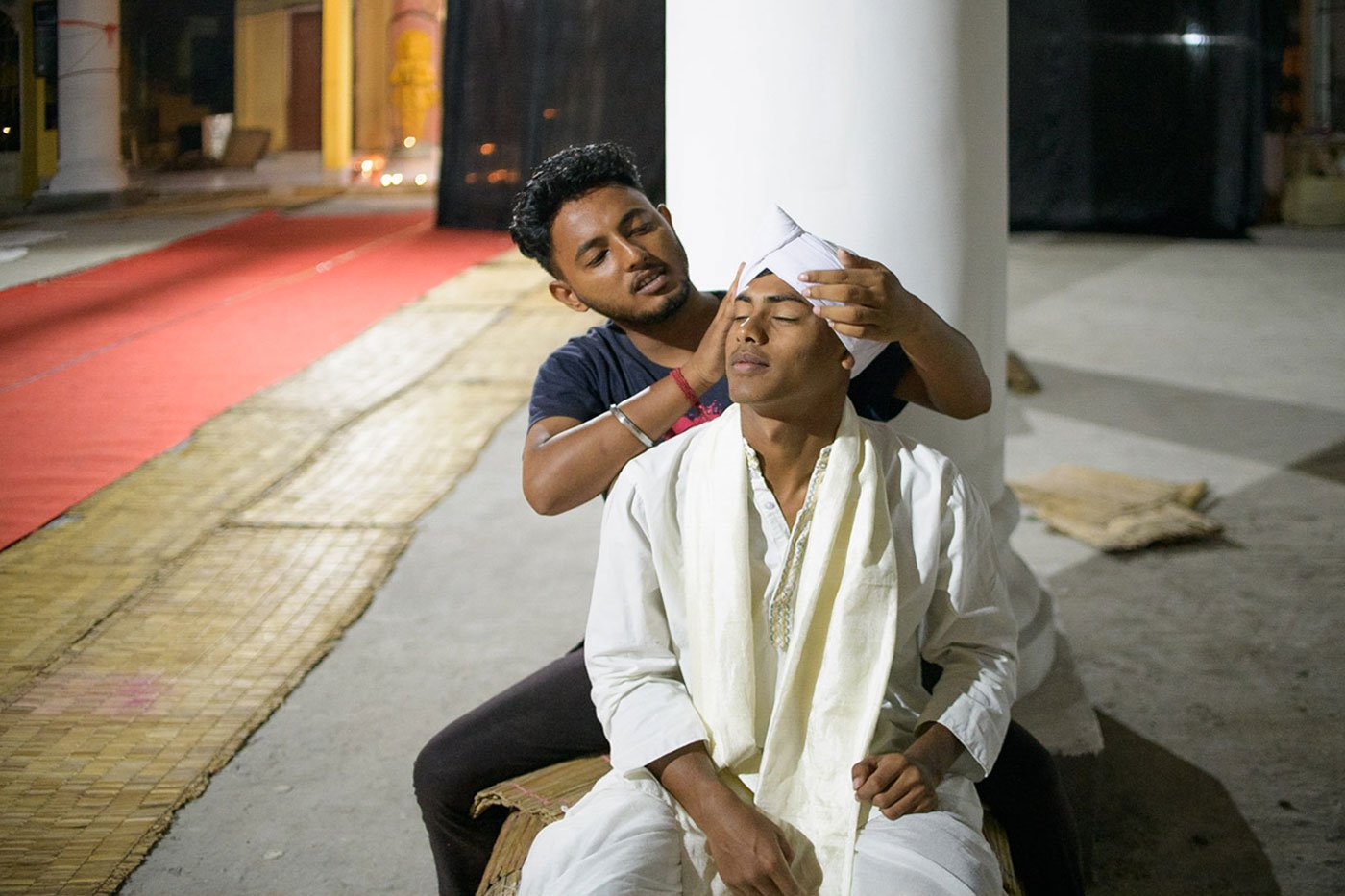
Left: Backstage at the Garamur Saru Satra, Partha Pratim Baruah, 16, checks his motamoni mala . Right: Manash Dutta (in blue t-shirt) helps Subhashish Borah tie the traditional headgear called paag
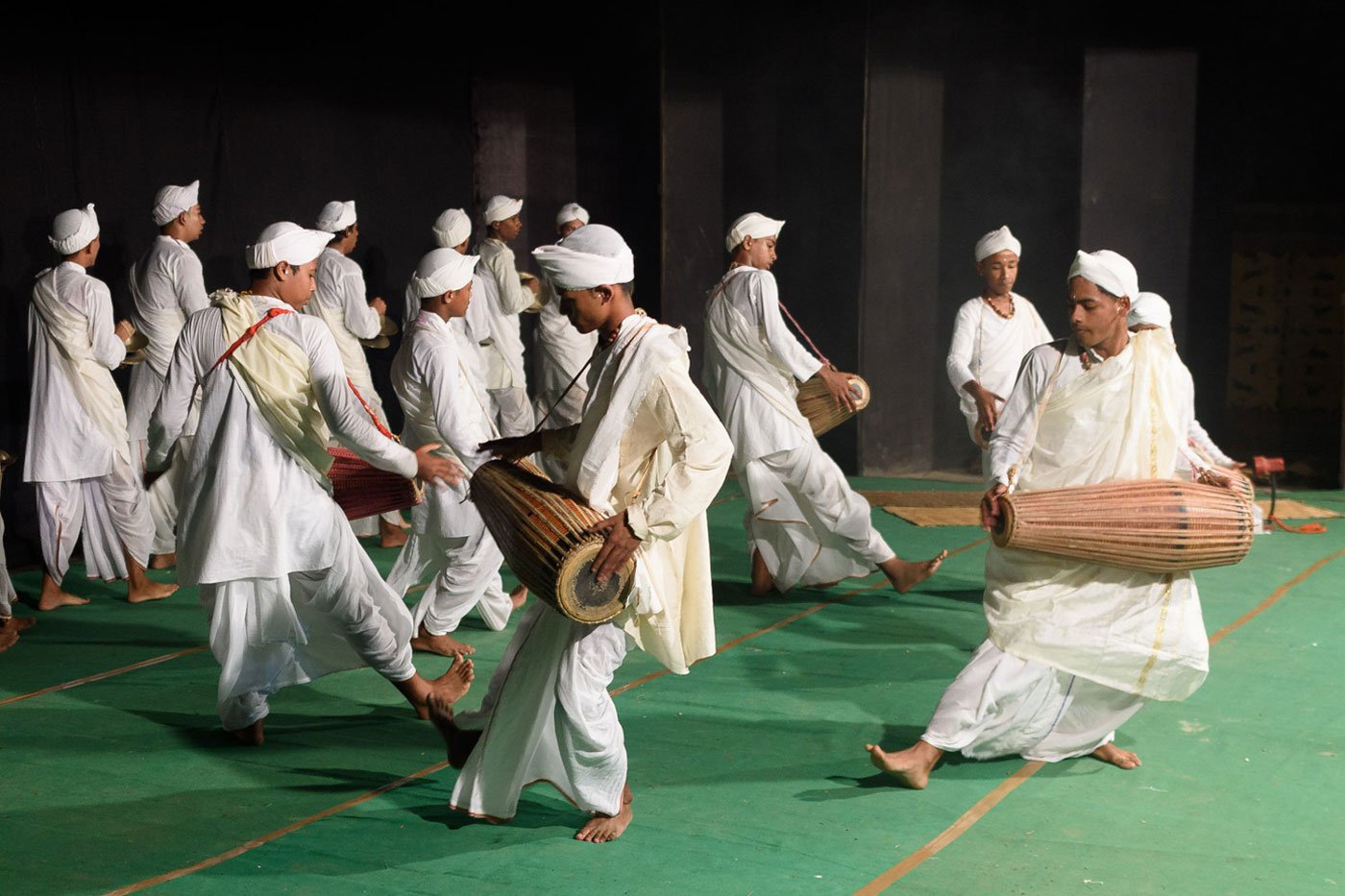
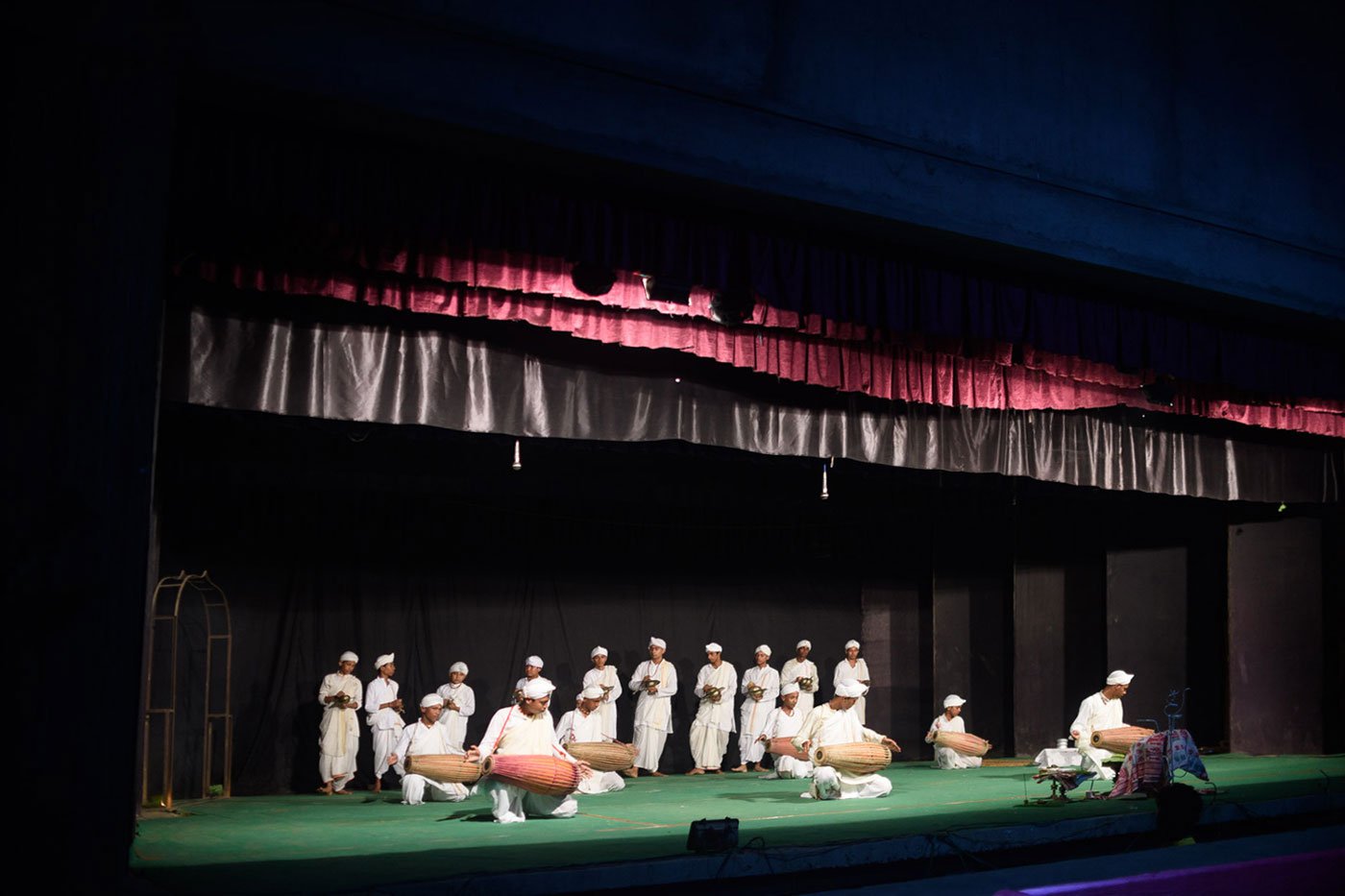
The young
gayan-bayans
of the
satra
perform with
taals
and
khols
. In Majuli, being a
gayan
or
bayan
is not a profession but a part of people’s identity
Ten years older, Manash Dutta is a bayan in the group and recently started working for a television network in Guwahati in the position of a junior editor.
At the age of nine he had begun learning with his uncle and other elders. “Since we are born in a sattriya environment, we learn from a young age by observing,” and so he passed his Sangeet Visharad exam in khol drums even before appearing for his matriculation exams.
Gayan-Bayan runs in his family and his uncle Indraneel Dutta is an important figure in the cultural life of the Garamur Saru Satra. “He is about 85 now. Even now, when someone plays the khol , he can’t stop himself from dancing."
The style of performing Gayan-Bayan differs across satras on the basis of the number and types of taal, maan, raga and mudra . One such variant – the Dhura – is unique to the Garamur Saru Satra and the Garamur Bor Satra where it is performed only once a year on the day of the borxobaah, the annual community festival taking place in the Assamese month of Ahar , usually coinciding with the months of June-July . Other two common variants are Barpetiya from the Barpeta Satra and Kamalabariya from the Kamalabari Satra in Majuli. Most of the satras in Majuli follow the Kamalabariya style. Performers come from all walks of life.
Gayan-Bayan, followed by
the
sutradhari nritya,
is also performed before
beginning a Bhaona (traditional folk play). “Without these a Bhaona can never
be complete,” Manash tells me. “The
sutradhar
describes the context of the Bhaona and narrates the gist of the story. These
days
sutradhari
is performed in our
mother tongue Assamese also. But the original language is Brajavali.”
'If some other people have to learn they will take a long time. Since we are born in this environment and have observed [the art] since a very young age, we are bound to learn'
*****
In the satra, the young start their foray into the art from around the age of three. One such initiation happens during Raas, one of the major festivals in Majuli, when children accompany parents to the practice halls. Read: Raas Mahotsav and the satras of Majuli
For 19-year-old Subhashish Borah, a bayan and another member of the group, the journey started when he was in Class 4. Subhashish, a relative of Manash, also learned by observing his uncles one of whom – Khirod Dutta – is a borbayan. The title is awarded by the satra to expert bayans.
Although he had danced in the Raas festival and even performed the role of a young Lord Krishna as a kid, Subhashish learned khol at the music school with around 10 other young boys and girls. The school, Sri Sri Pitambardev Xangskritik Mahavidyalaya, established in 1979 goes through periods of closure and being active. It shut down again due to a lack of teachers in 2015.
Subhashish, along with 19-year-old Priyabrat Hazarika and 27 other students started attending Manash and Khirod Dutta’s Gayan-Bayan classes begun in 2021. Priyabrat had studied khol in the Mahavidyalaya for three years until it closed down.
“If I had the chance to
learn for one more year, I would have reached the last stage, the Visharad,” he
says. “I thought the school would still be there.”
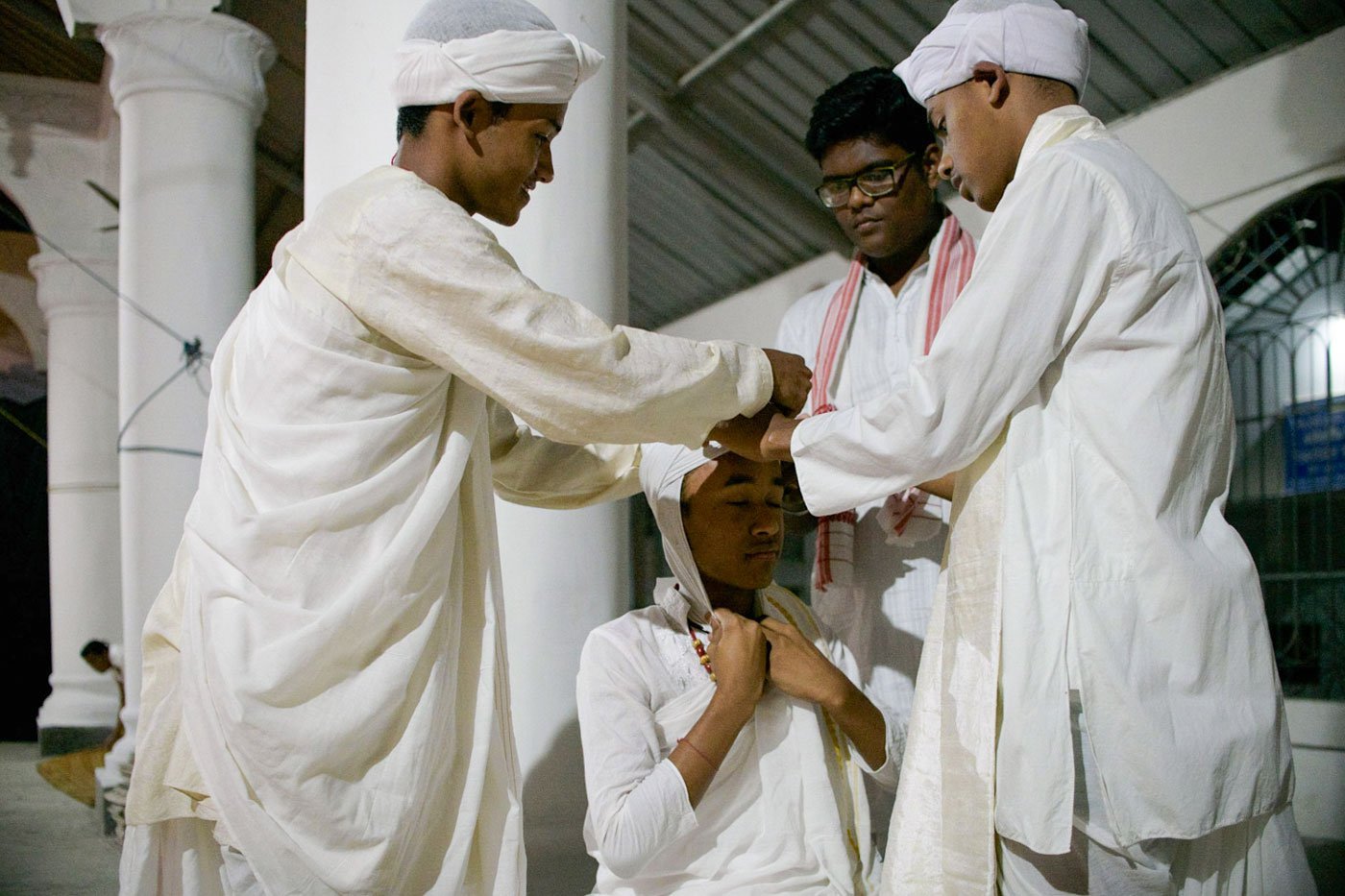
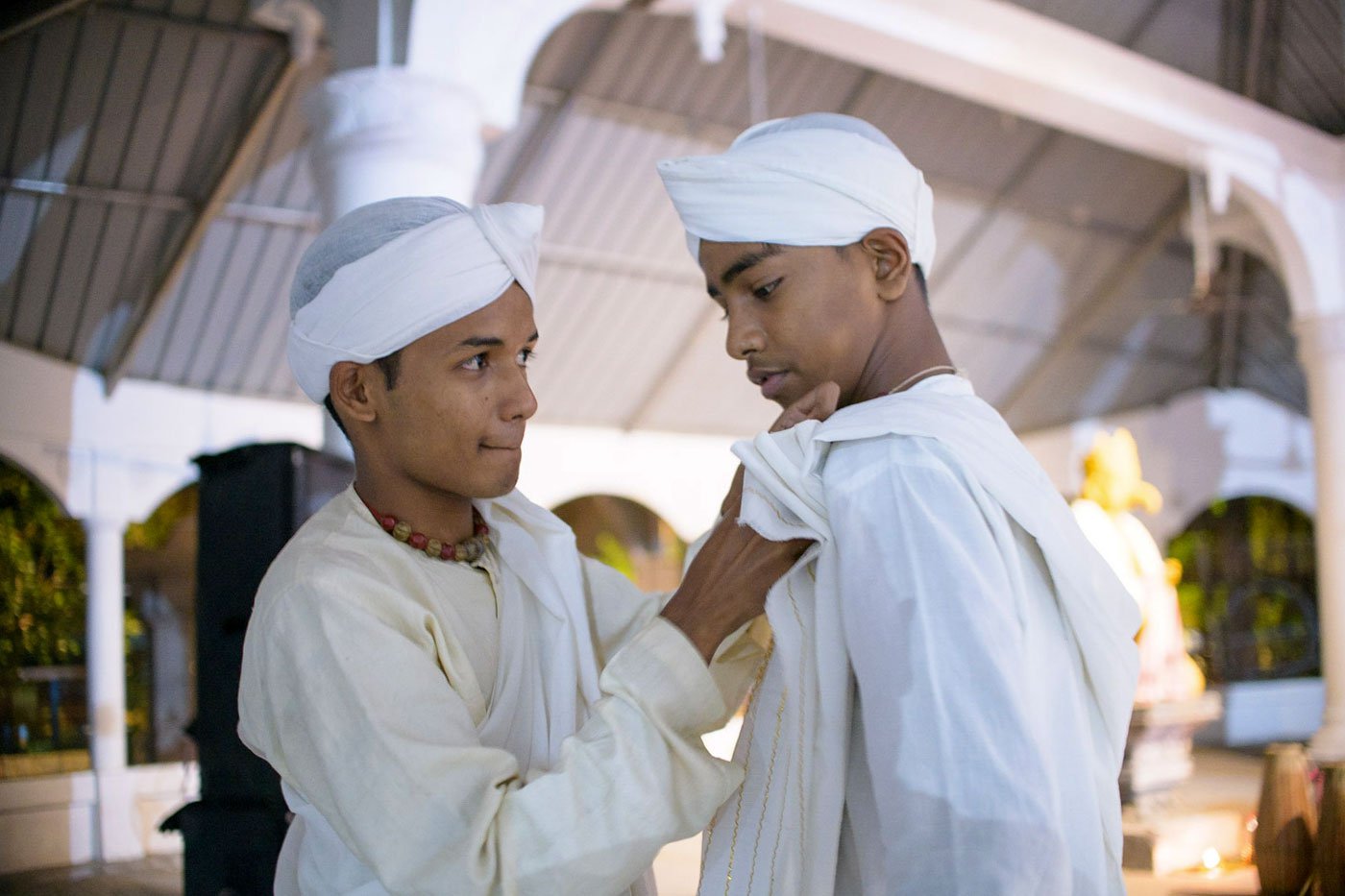
Left: Priyabrat Hazarika (left), Subhashish (right) and Xuruj Jyoti Borah (centre) help fellow
bayan
Nabajyoti Borah (sitting) tie his
paag
. Right: Priyabrat helps Siddhartha Borah pin the
seleng sador
to his shoulder. The
seleng
is a long, rectangular piece of cloth draped over the body and makes an essential part of the performance attire
He goes on to explain what a traditional curriculum for learning to be a gayan or a bayan entails. The students are first taught the different taals which they learn to play on their palms. Basics of nrityo and khol playing are also taught in this initial stage. Students also learn Mati Akhora.
“Mati Akhora is our way of physical culture. It’s like exercise,” Manash explains. “If one does it, all 206 bones of their body will be fit and fine.” There are several different types of Akhoras named after the gestures made by birds and animals – morai pani khowa , kachai pani khowa, teltupi , among others.
In the next stage students are grouped according to the discipline they want to learn. Some learn Nrityo , some take up khol and others learn borgeet . Those planning on becoming gayans learn to play taal at this stage.
“If some other people have to learn and grasp these teachings, they will take a long time,” says Manash. “Since we are born in this environment, we grew up here and have observed [the art] since a very young age, we are bound to learn. But those who are not from this environment will take years to learn properly.”
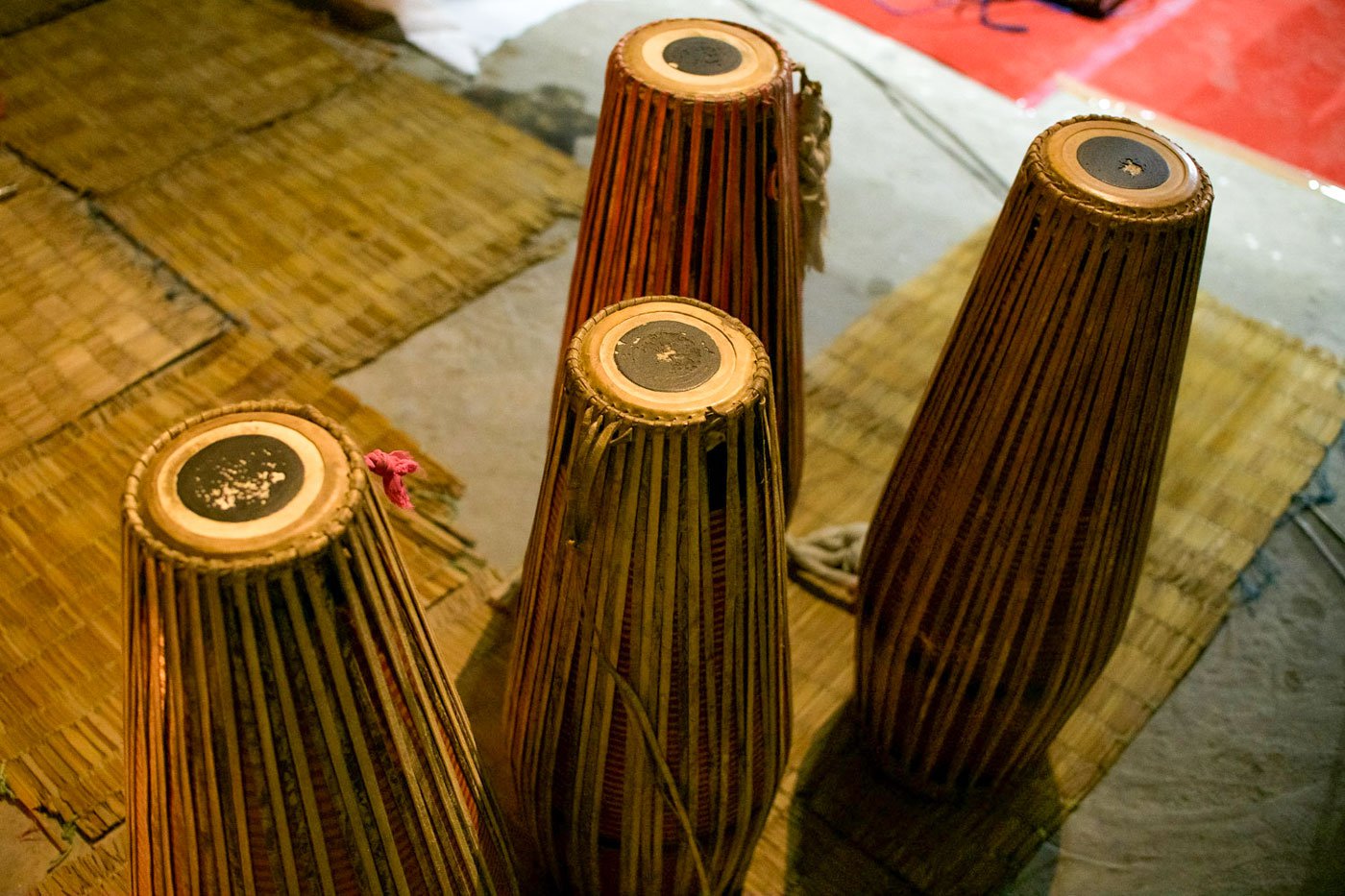
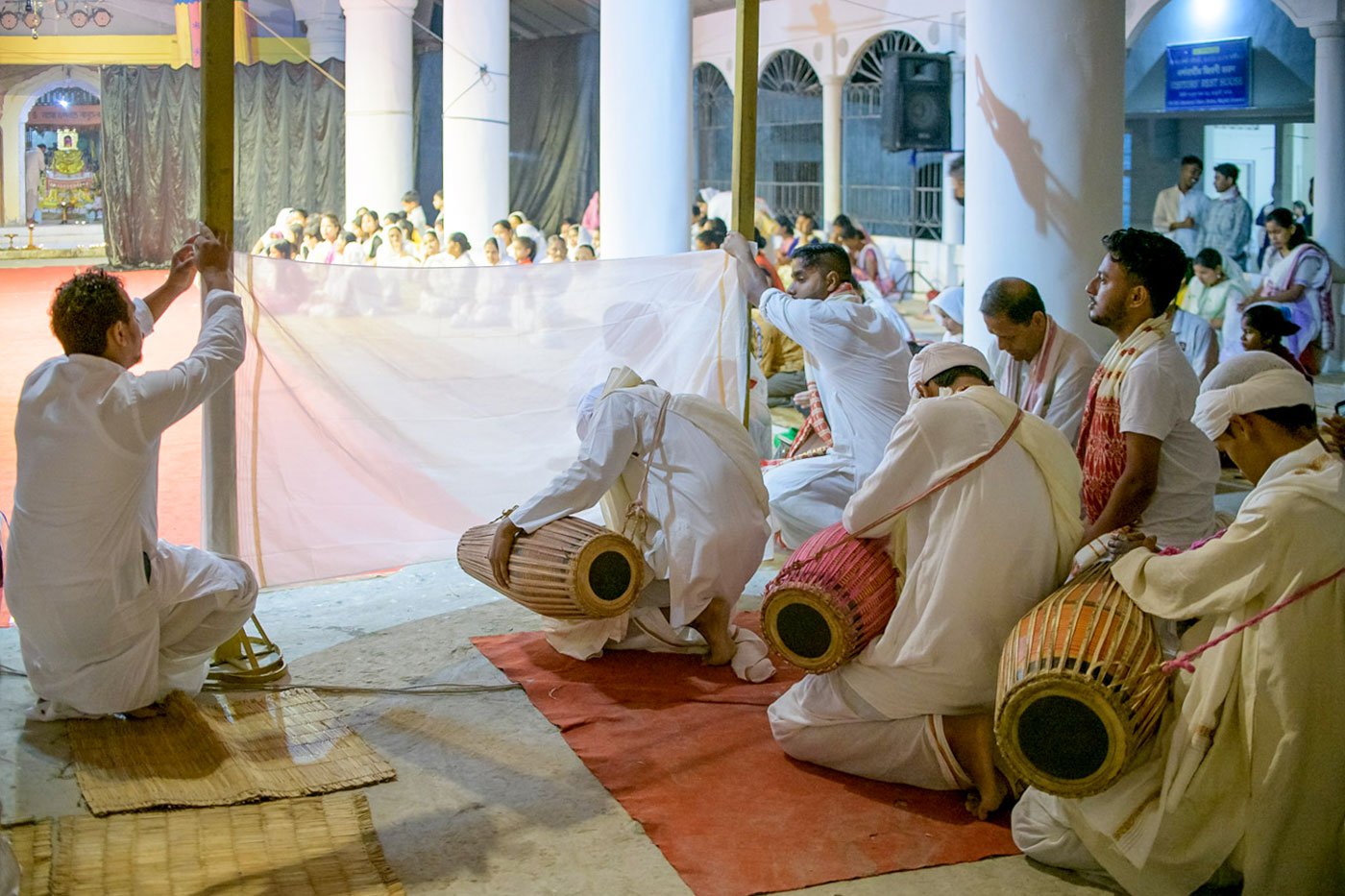
Khol,
an asymmetric drum played by the
bayan
is central to the performance. A screen is held up as the group, along with their mentors, offers a prayer before beginning
The popularity of Gayan-Bayan has risen in recent years. The art, earlier practised only in the satras , is also performed in the villages of Assam today. Still, the number of people learning to be gayans and bayans continues to dwindle. The younger generation is migrating out of Majuli looking for better livelihoods.
“The fear that all of this will be lost does come,” Priyabrat tells me.
Most of Sankaradeva’s musical compositions were destroyed during his lifetime. What was inherited formed only a small part of the whole, passed on by one generation teaching the next. Manash has strong feelings about this legacy.
“Generation after
generation will perish but the creations of Sankaradeva will remain immortal.
That is how he will continue to live within us,” he says. “It is a significant
thing to me that I was born in Majuli. [This tradition] is alive in Majuli and
will continue to live on. That, I can say with certainty.”
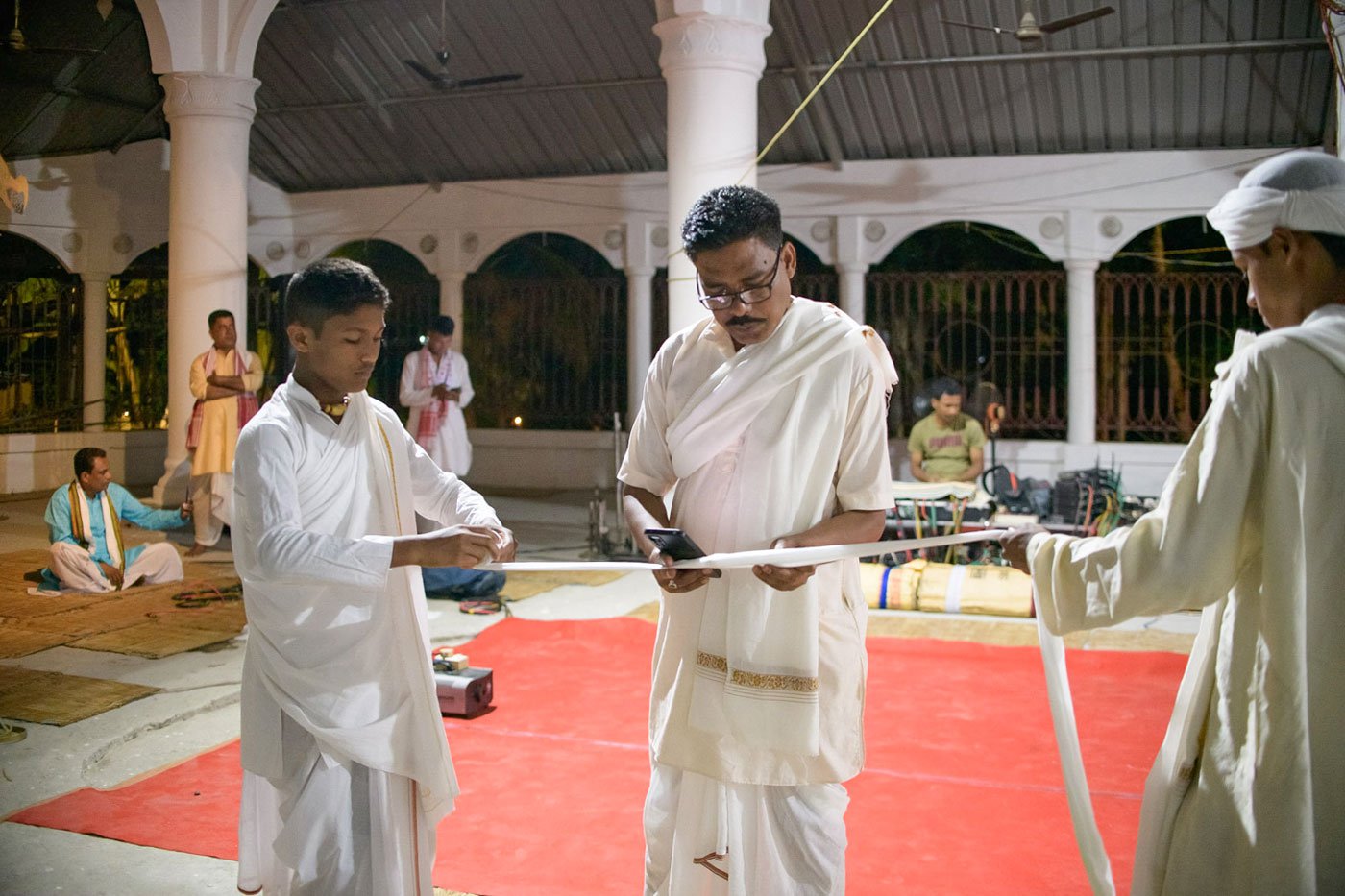
Tulasi Borah (centre)
and Priyabrat (right) help Jyotishman Dutta roll his
paag
in the
namghar
(prayer house) of the Garamur Saru Satra
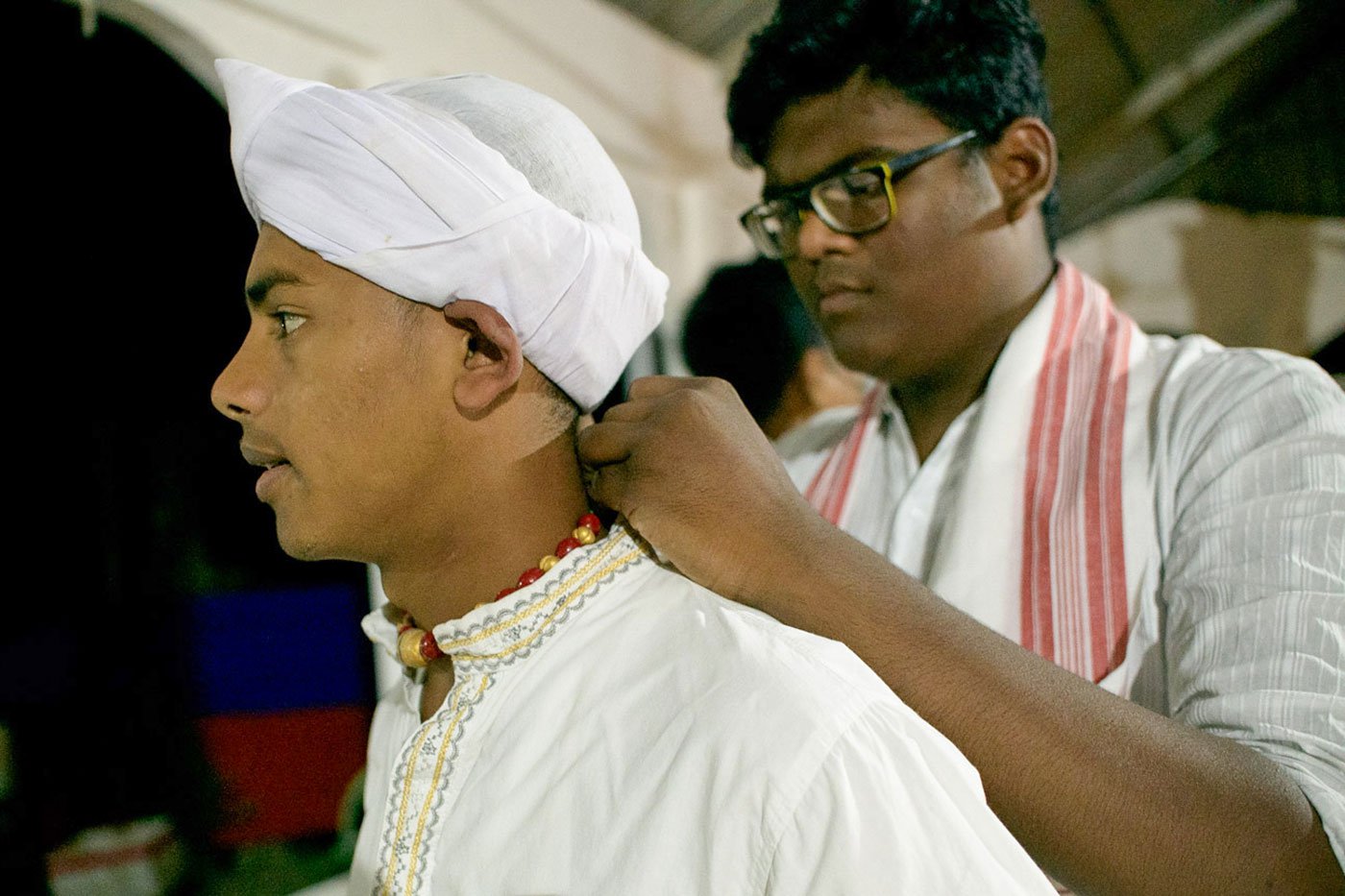
Xuruj, a
gayan
in the group, arranges the
motamoni mala
around the neck of his fellow artist Subhashish
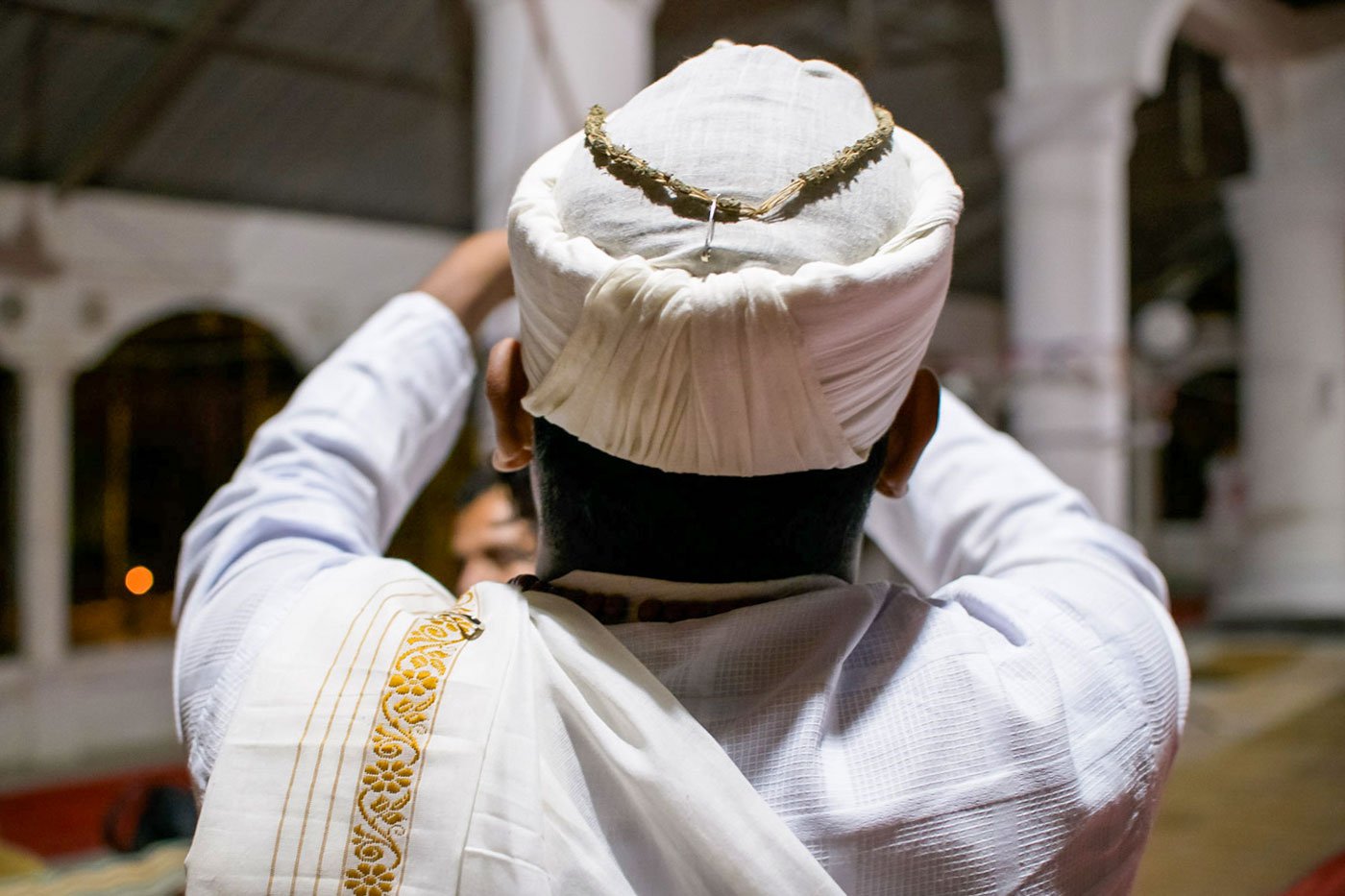
A chain of
bakul
flowers (Indian Medlar) adorns the
paag
of
gayan
Samudra Hazarika. It is part of the traditional attire worn by performers
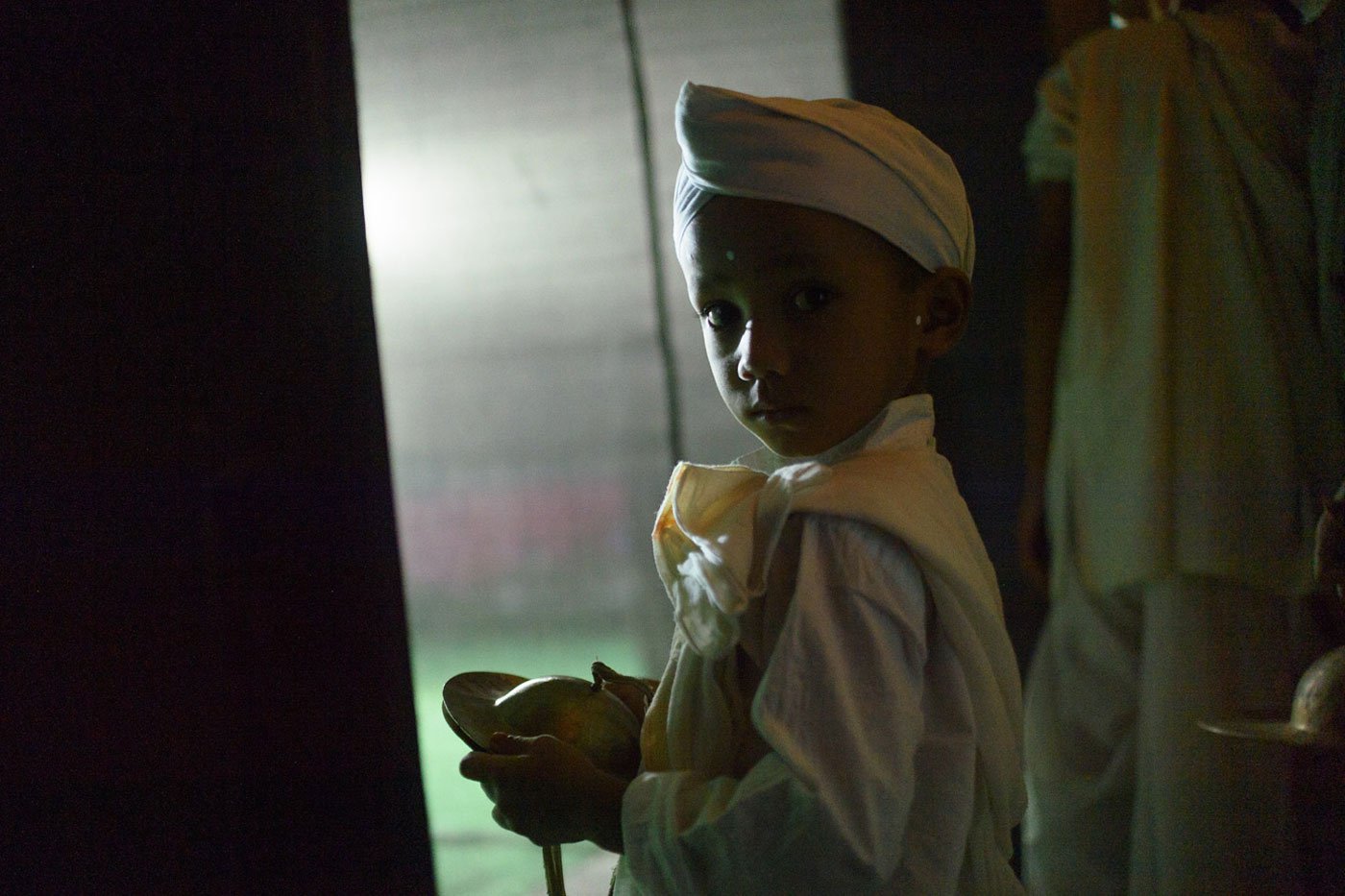
Anurag Saikia, one of the youngest in the group, waits near the wings of the stage. The children in the
satra
start their lessons early
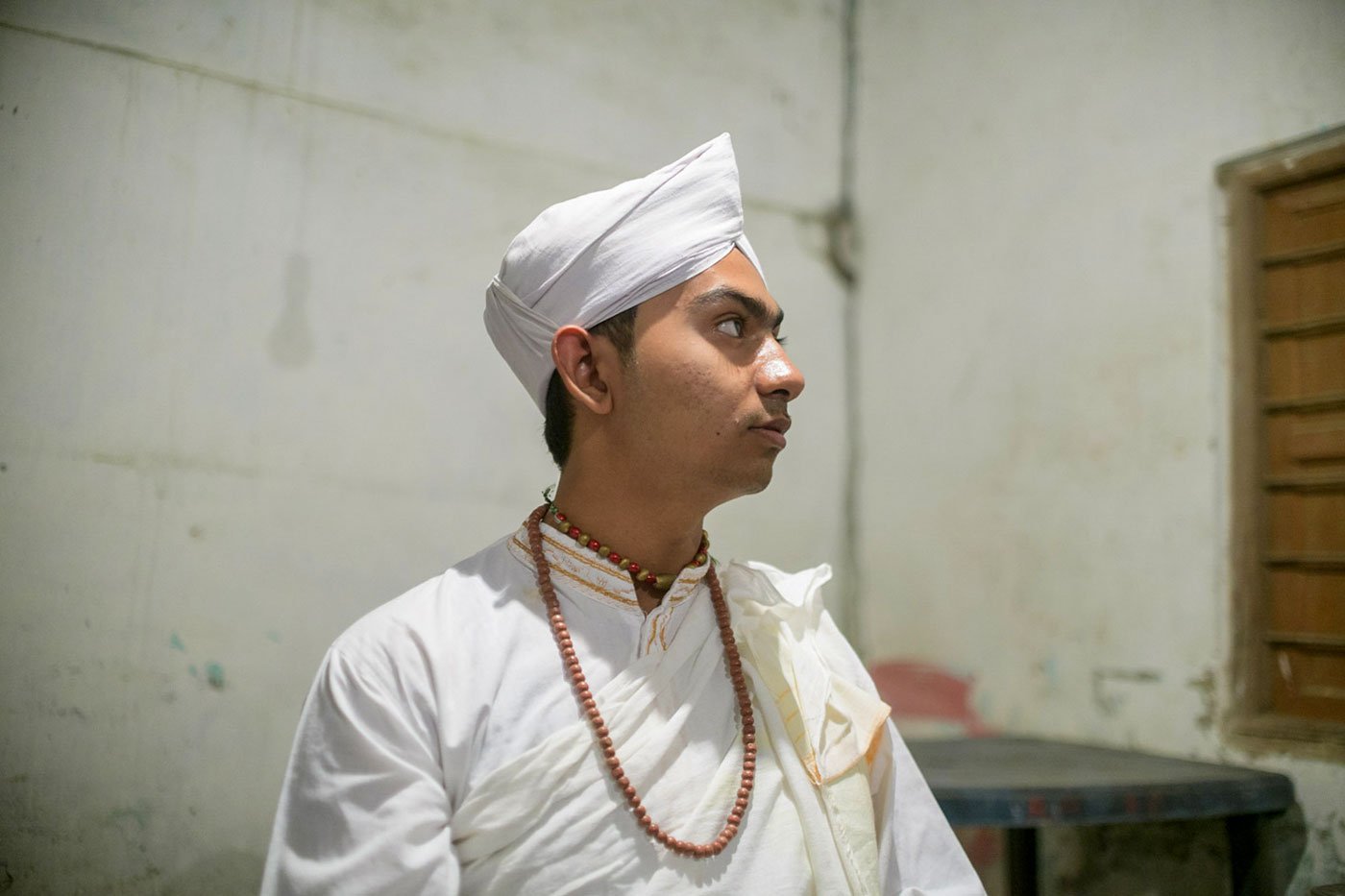
Shantanu Bhuyan poses for a portrait on the first evening of the Raas Mahotsav, one of the major festivals in Majuli
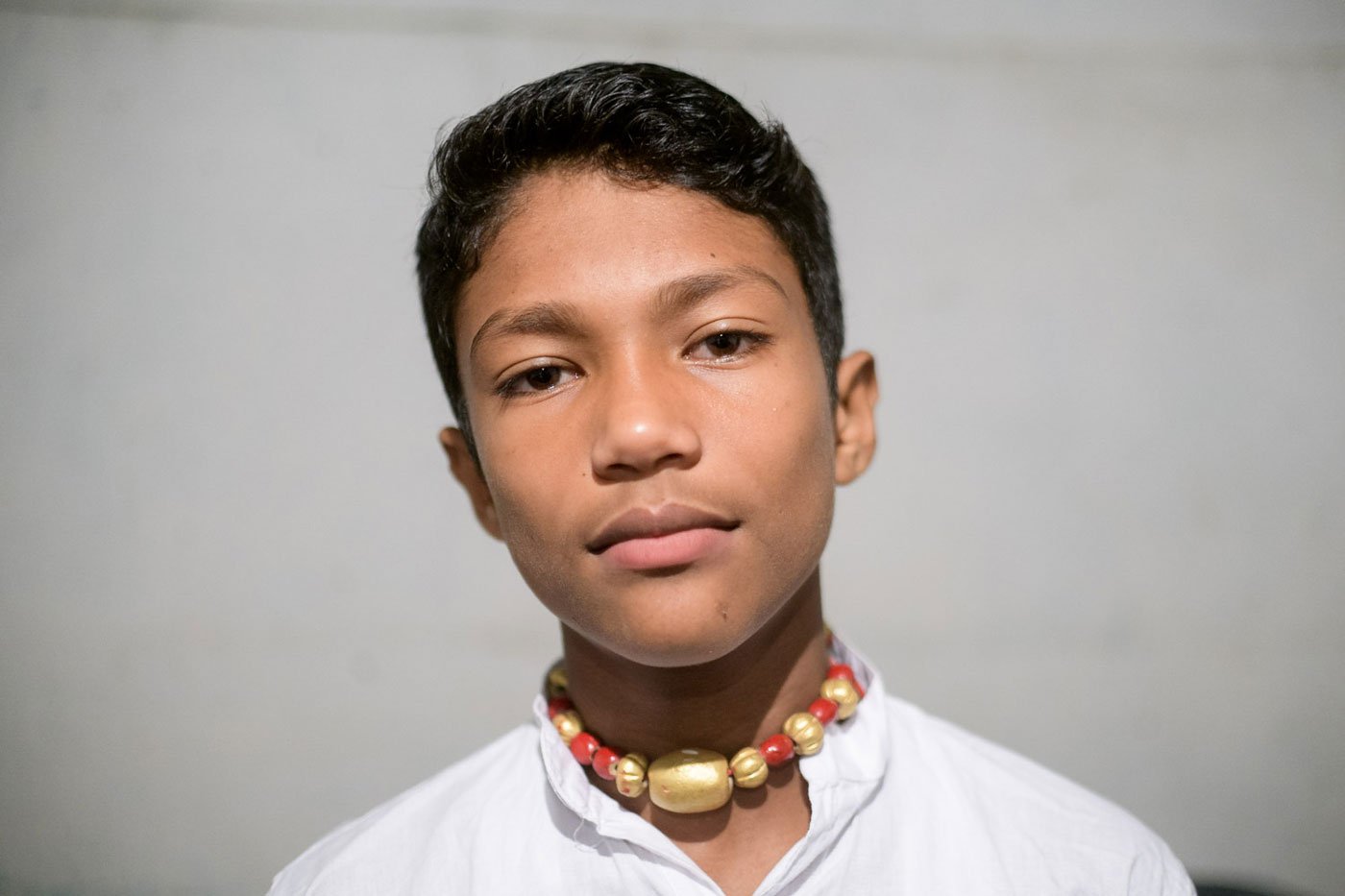
Thirteen-year-old
bayan
Jyotishman Dutta waits to perform during Raas Mahotsav
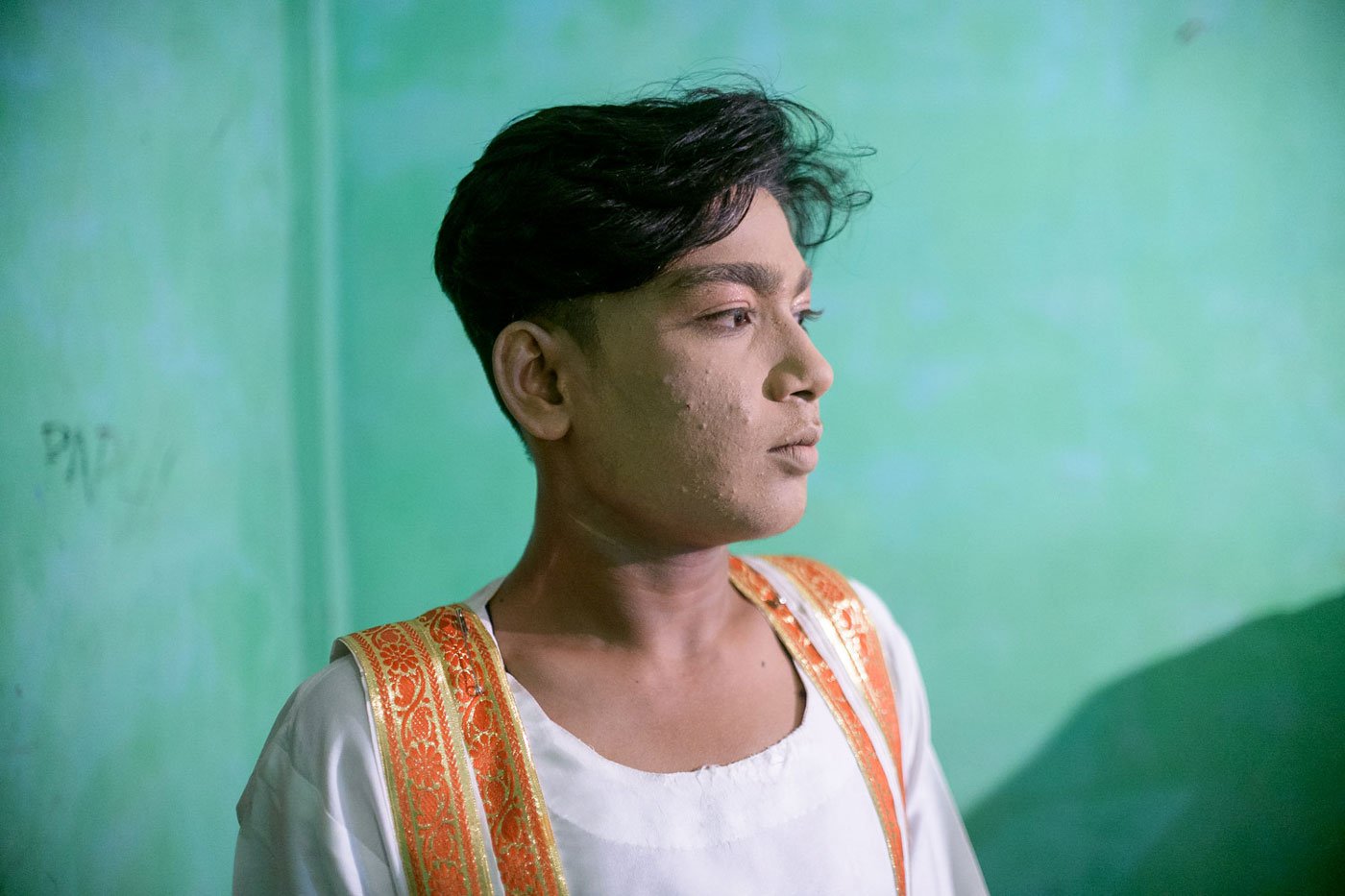
Riki Bora will be the
sutradhar
(narrator) who
describes the context of the Bhaona (folk play) and narrates the gist of the story ahead
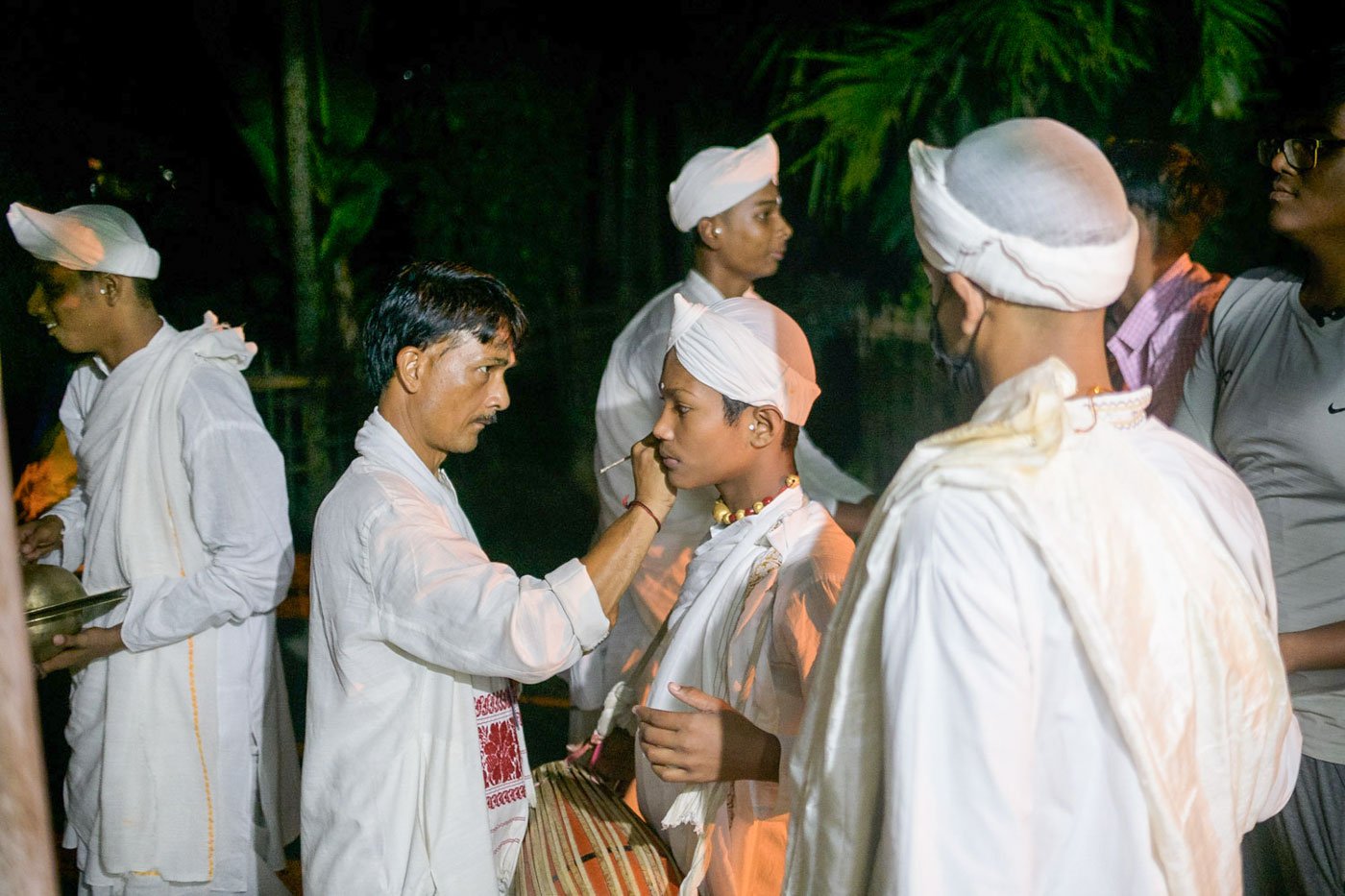
Nityananda Dutta applies
mrittika tilak
on Jyotishman as the group of young
gayan-bayans
gets ready to go on stage
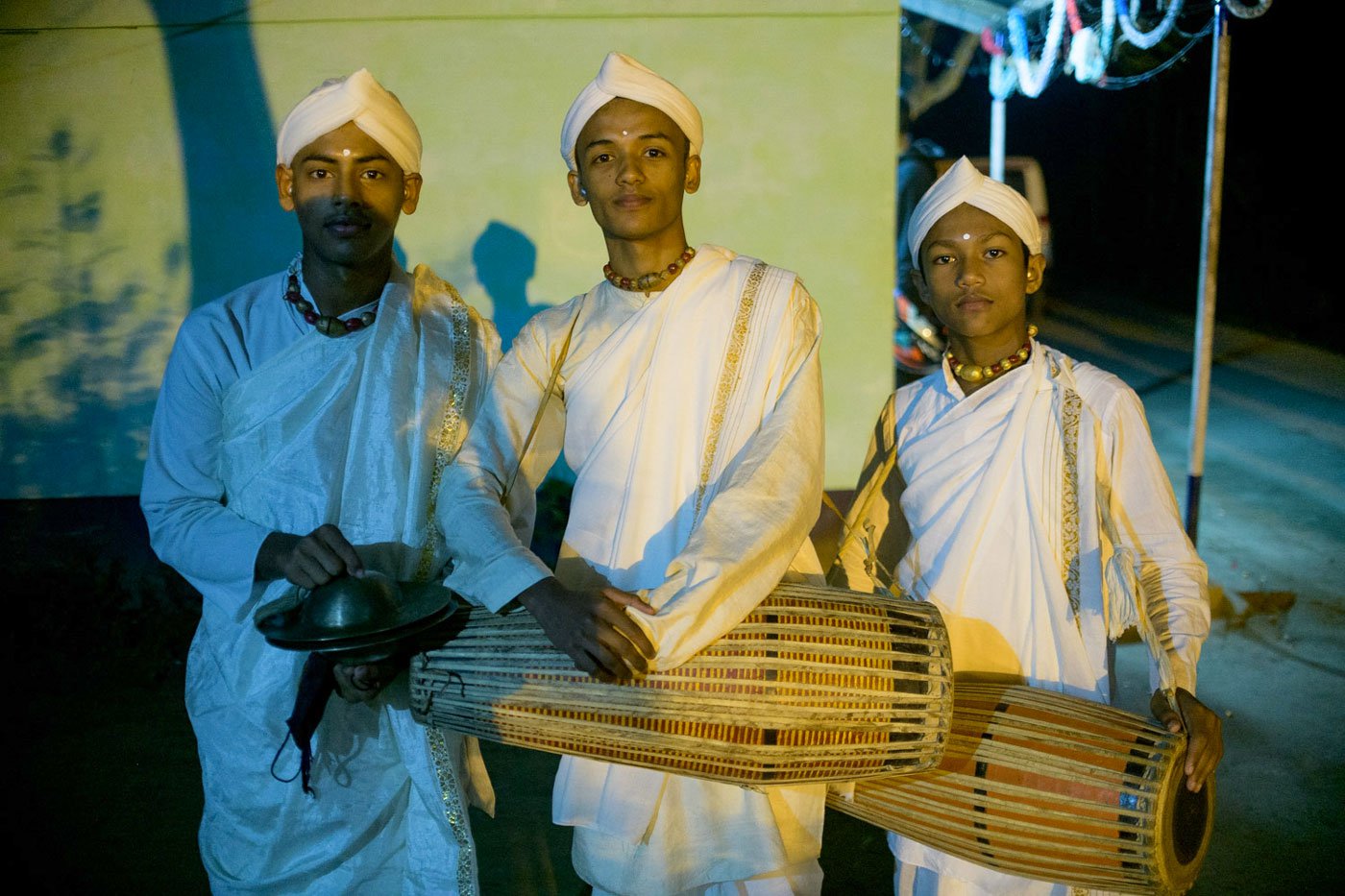
Subhashish Borah, Priyabrat Hazarika and Jyotishman Dutta pose for a portrait in traditional attire
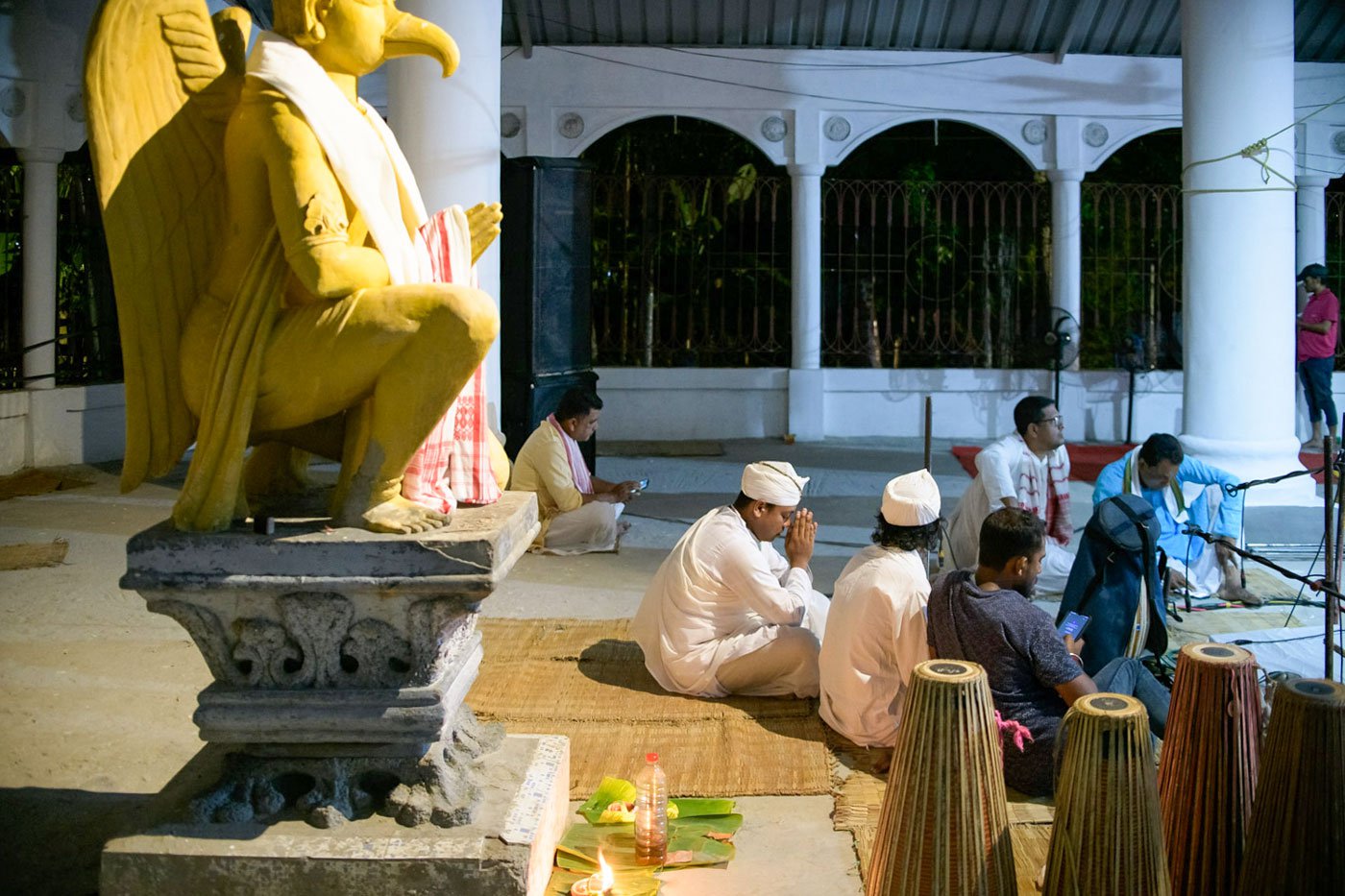
Samudra Hazarika offers a prayer during the performance of the Nri Simha Jatra Bhaona in the
namghar
of the Garamur Saru Satra
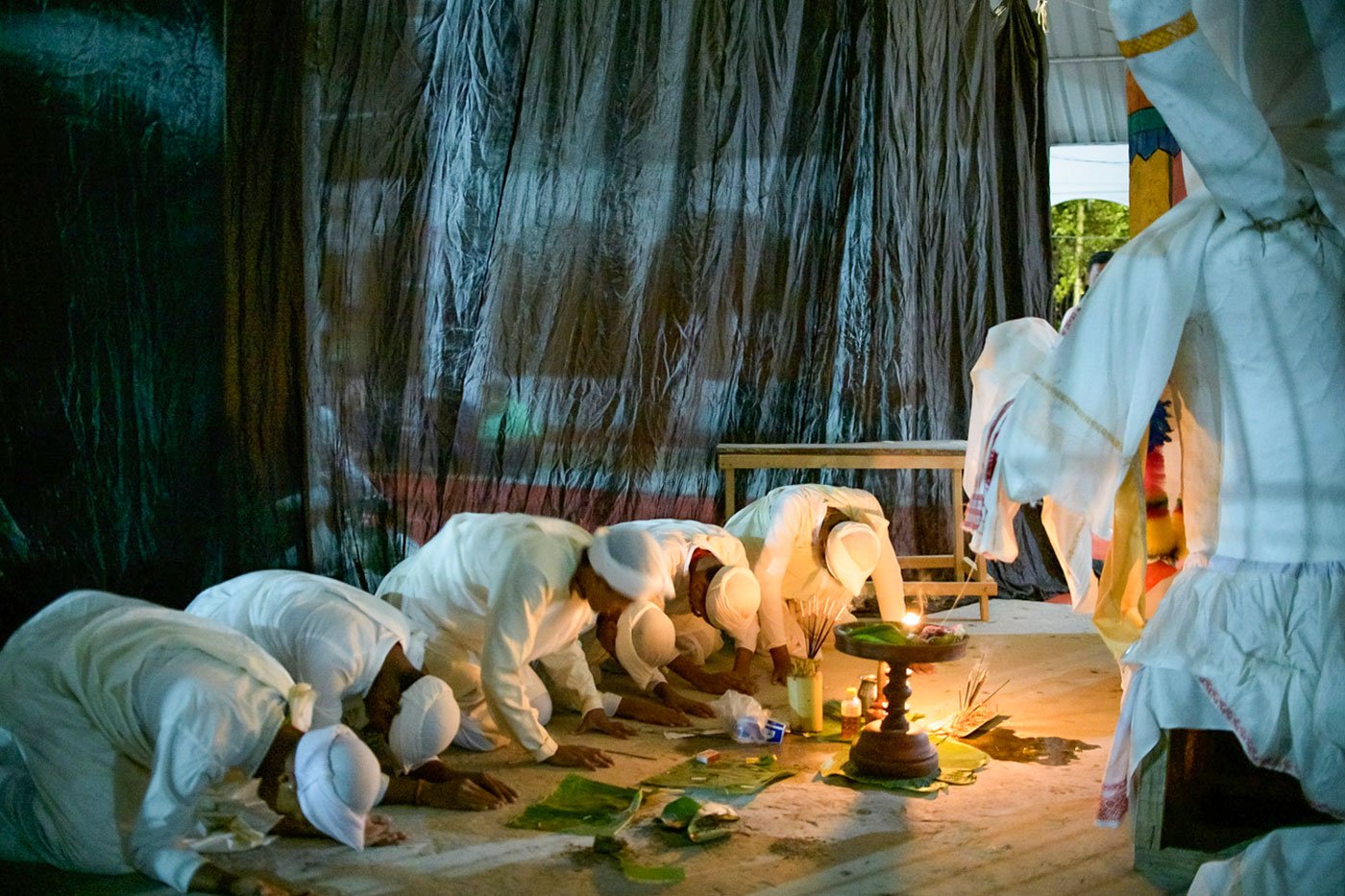
The group prays to the Nri Simha mask before their performance
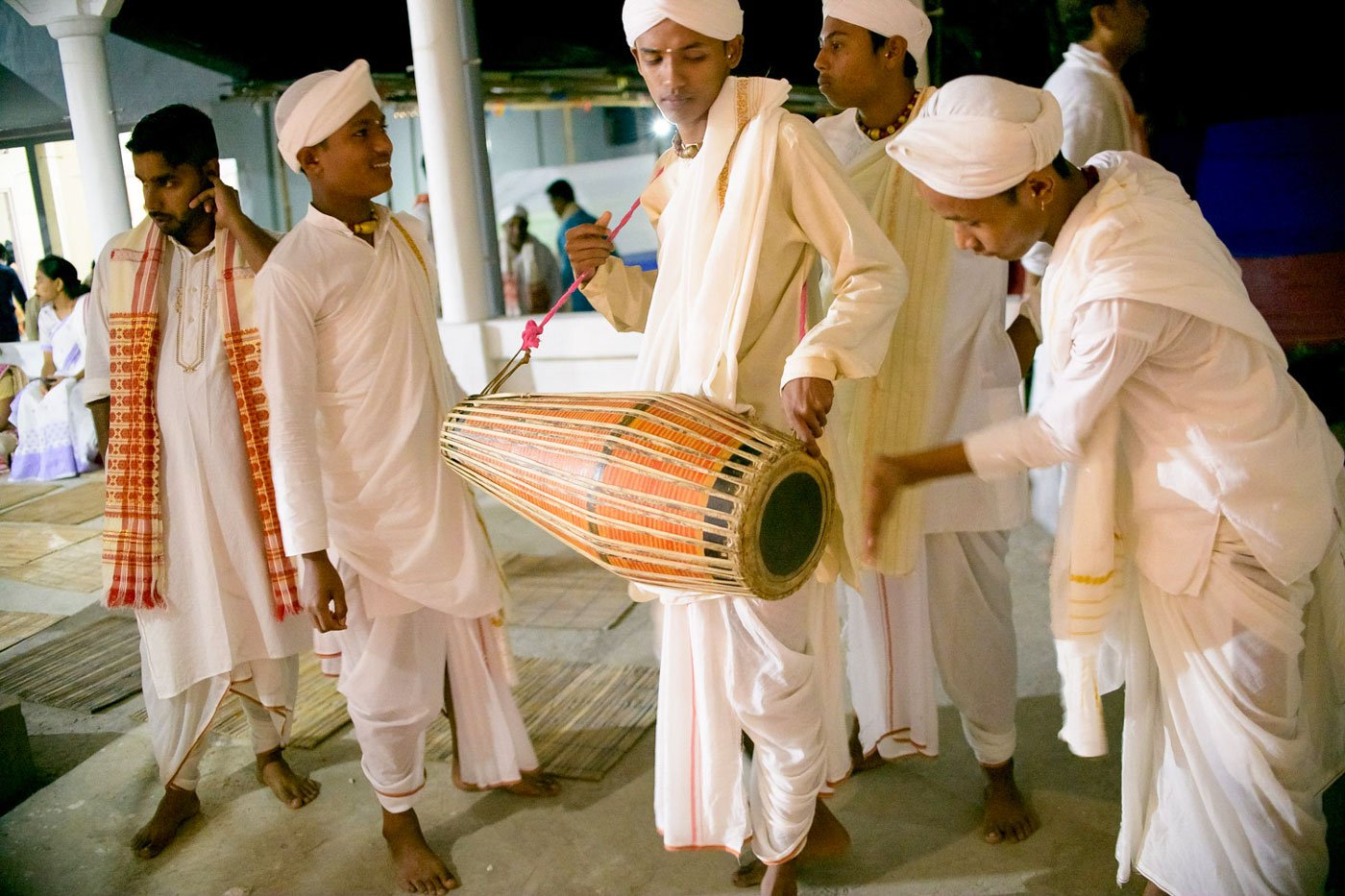
Nabajyoti Borah checks the khol held by Priyabrat as their fellow bayans Jyotishman (left) and Partha (right) look on
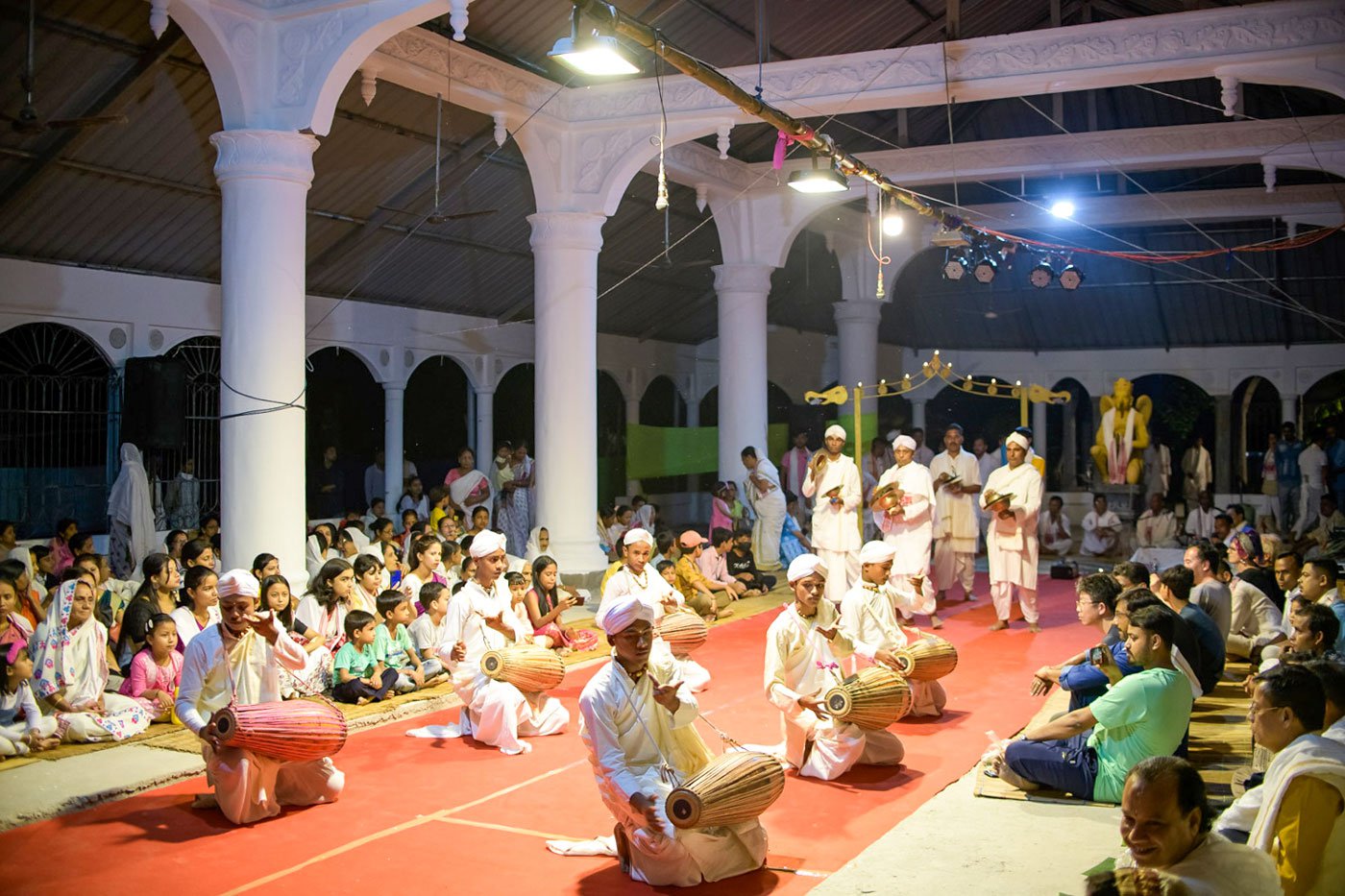
Performance at the
namghar;
a traditional
gayan-bayan
curriculum begins with learning to play different
taals
on the palm of your hands
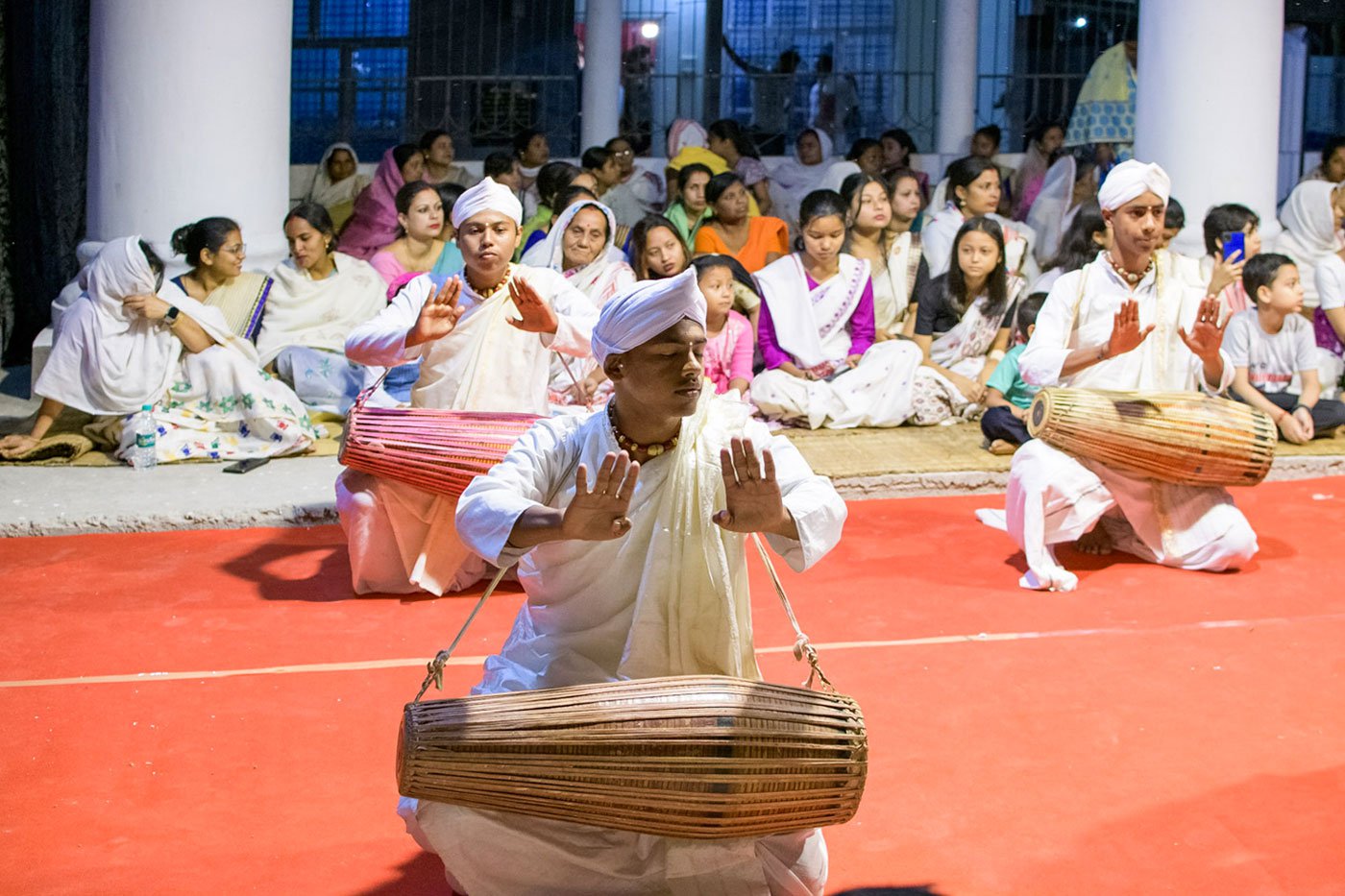
The style of performing differs across
satras
on the basis of the number and types of
taal, maan, raga
and
mudra
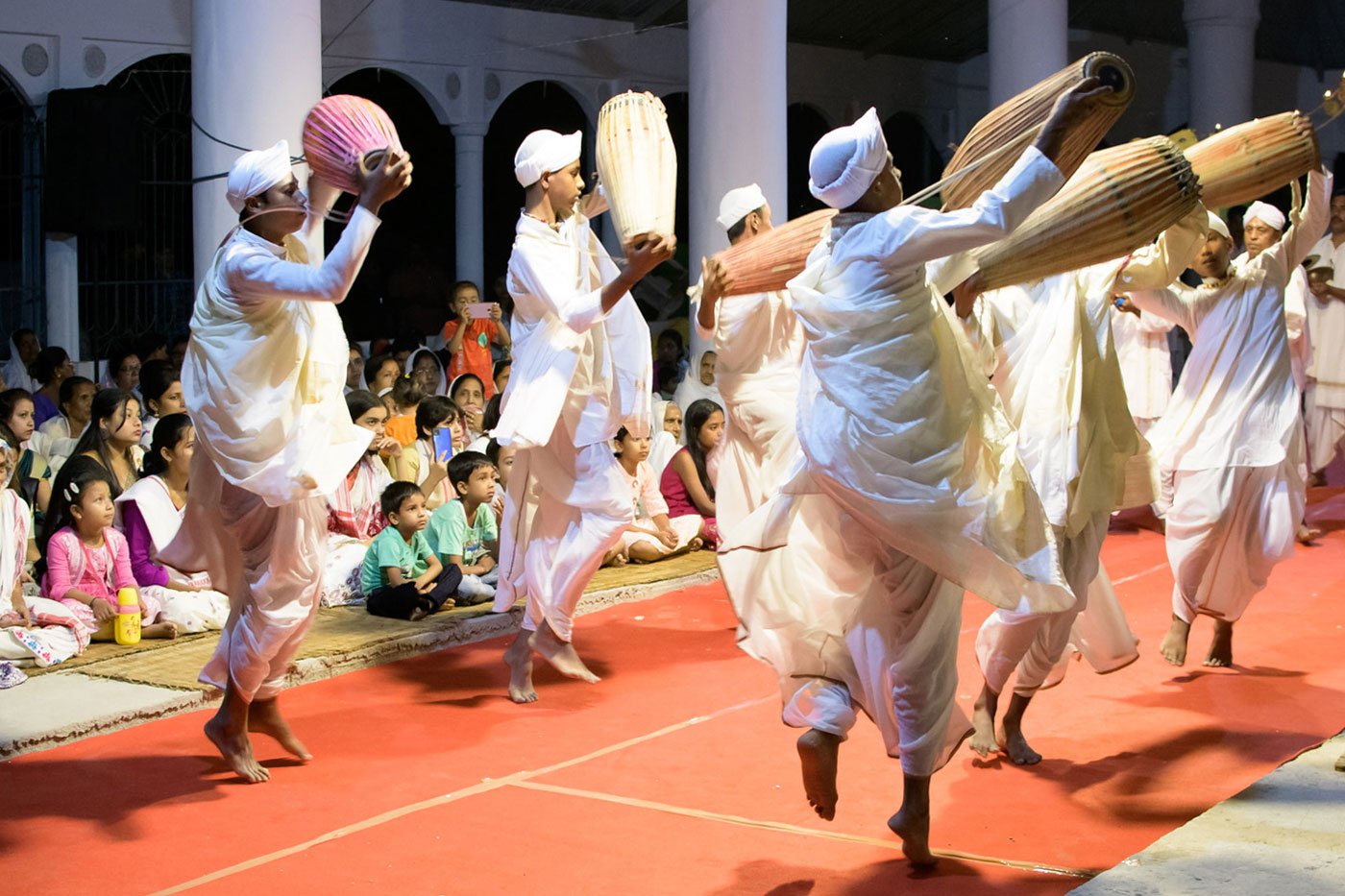
In the initial stages of study, the students are also taught the basics of
nrityo
. Later, students are grouped according to their choice of discipline –
nrityo, khol
and
borgeet
among others
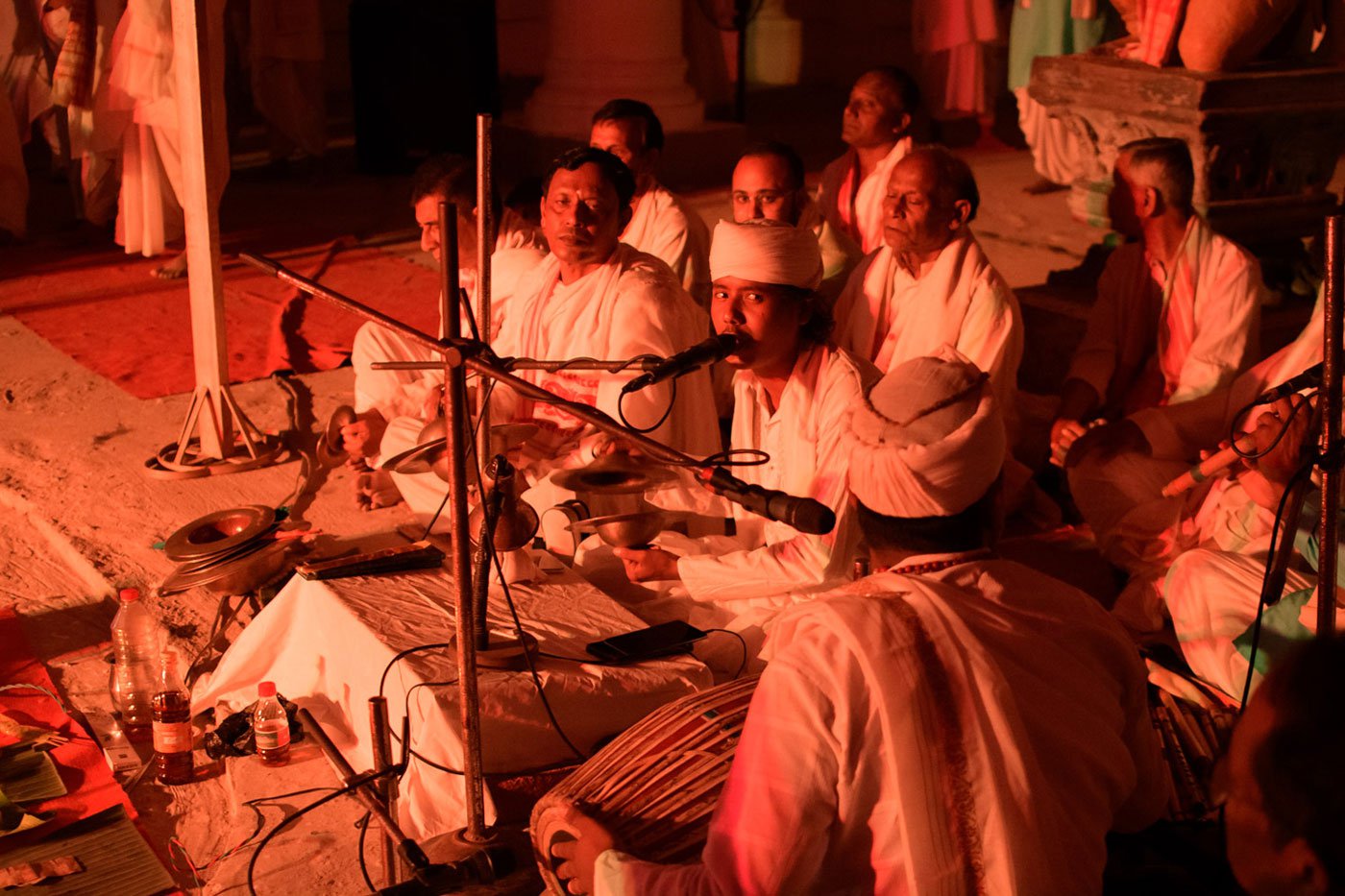
Debojit Dutta (centre) sings with the group of
gayans
to provide the background music in the folk play, Nri Simha Jatra
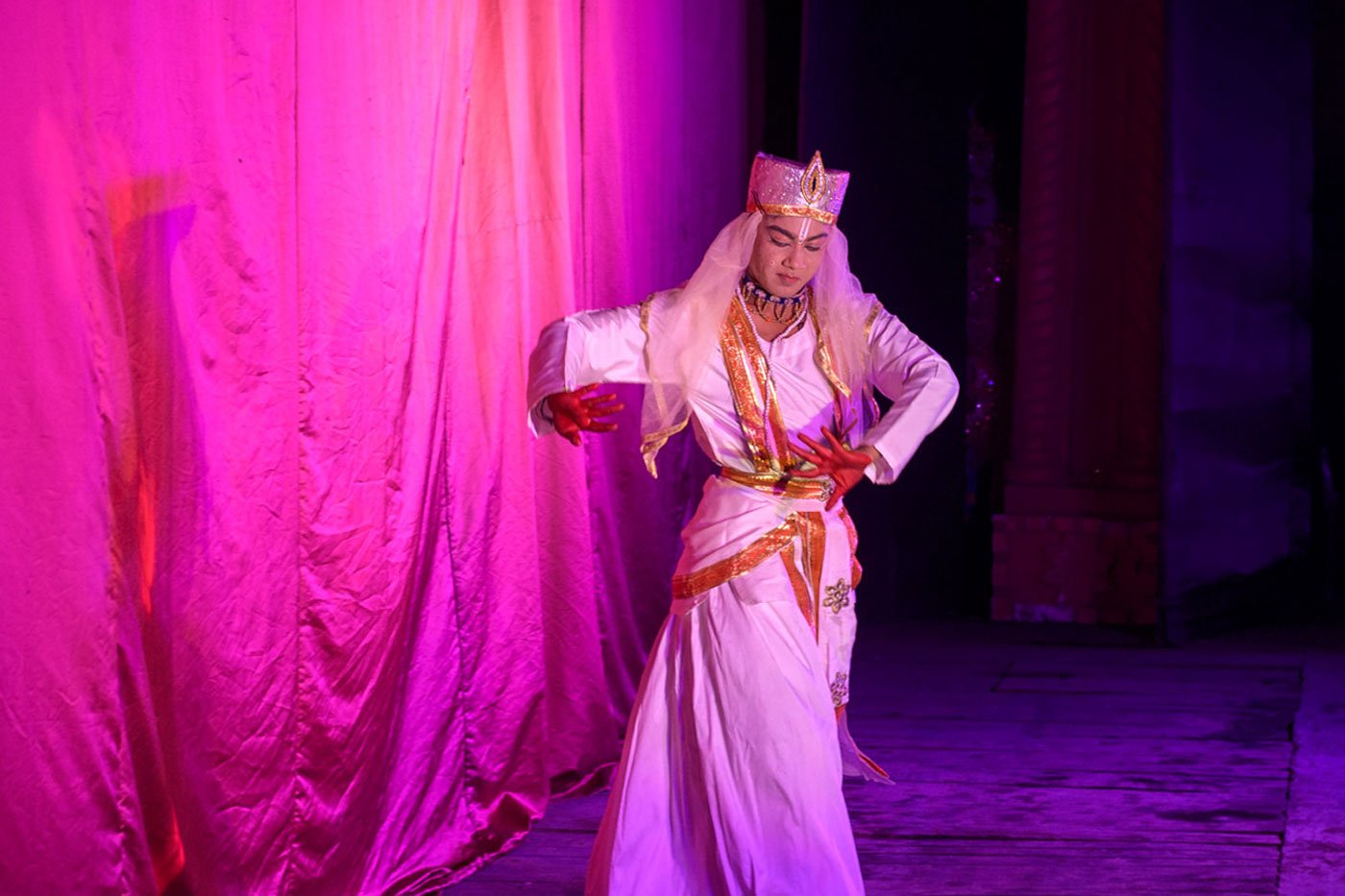
Riki Bora performs the
sutradhari nritya
without which a Bhaona is never complete
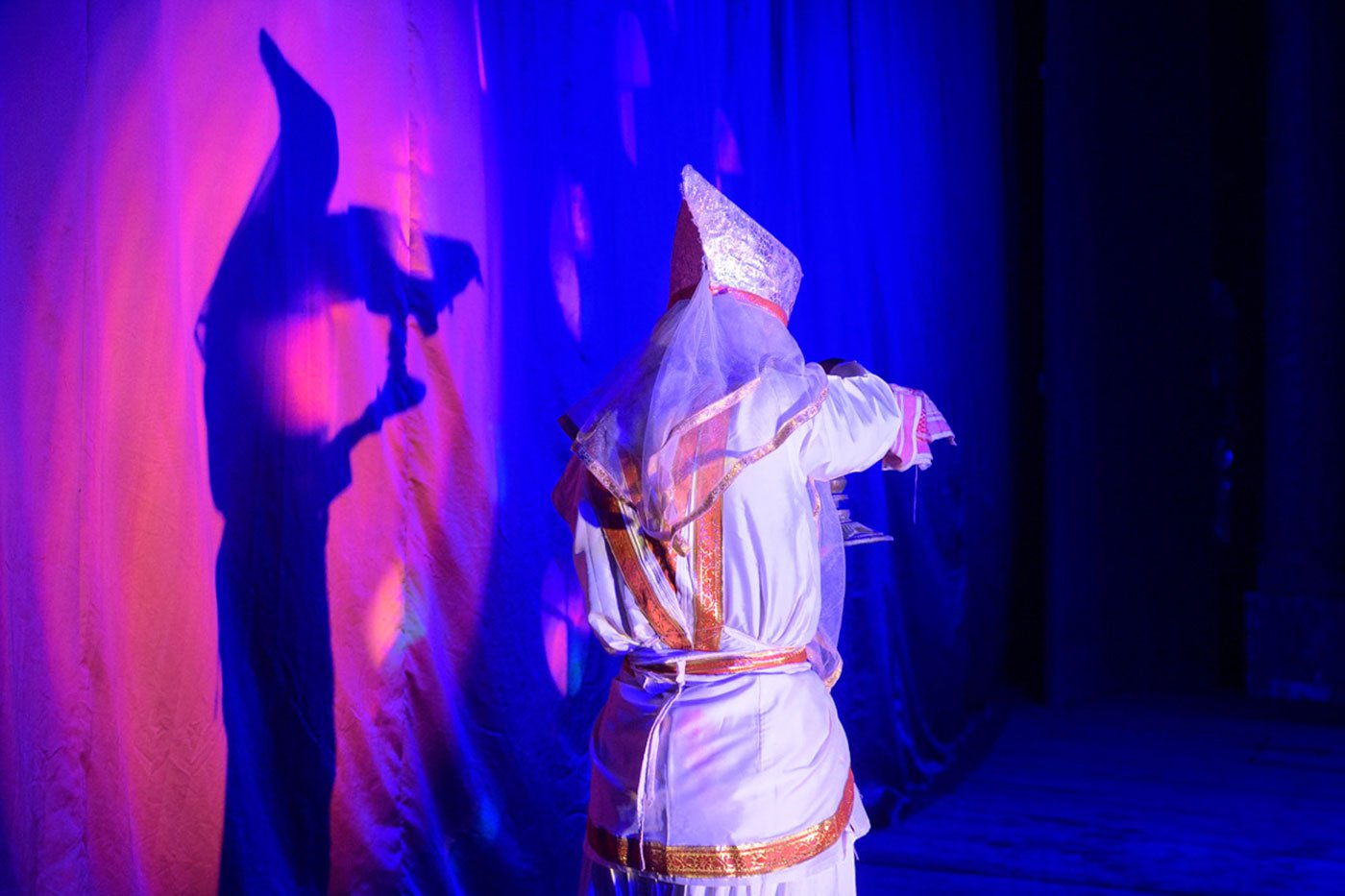
Riki holds up a
xorai
as he exits the stage after his performance
This story is supported by a fellowship from Mrinalini Mukherjee Foundation (MMF).
